
As a MedBridge Education user for the past 7 years, I’ve taken a lot of continuing ed courses on the platform. Today I’ll highlight the top 5 courses on MedBridge for orthopedic physical therapy continuing education.
Taking continuing education courses like these has not only elevated my clinical skills, but it’s helped me become a better clinical instructor. If you already have MedBridge, you can access all of these courses within your account! If you haven’t heard of MedBridge Education yet, then I hope you take advantage of the PTProgress/MedBridge discount when you sign up for MedBridge!
Let’s dive into the top MedBridge courses!
Top 5 MedBridge Education Courses: Orthopedic Therapy
1. The Athlete Movement System: Spine (Recorded Webinar)
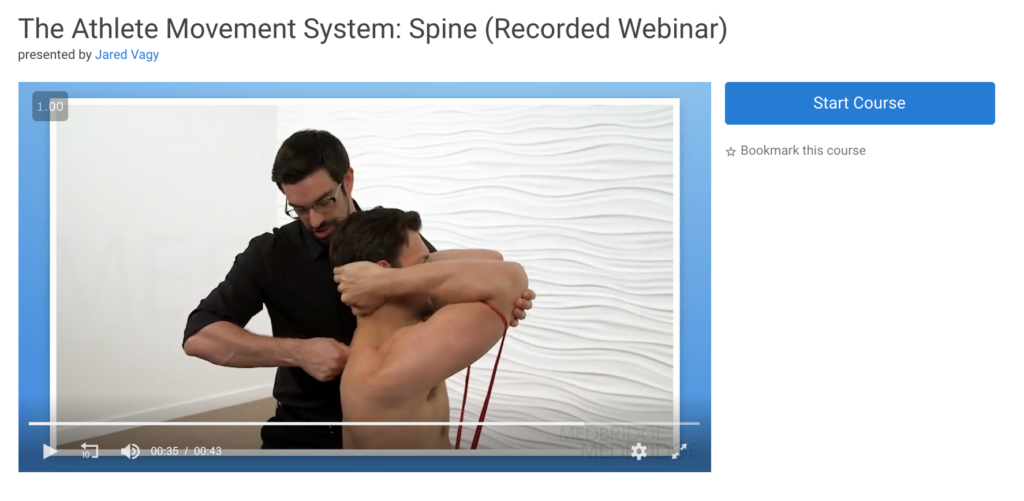
This was a live webinar hosted by physical therapist Jared Vagy and includes over 3 hours of teaching. What I like about the course is that it uses the principles of diagnosing and treating the movement system but focuses on how to apply these principles to your athlete population. If you haven’t taken any of the Movement System Series courses, I highly recommend those courses on MedBridge. I really enjoy this list of Movement System courses which is why this one made its way to the top!
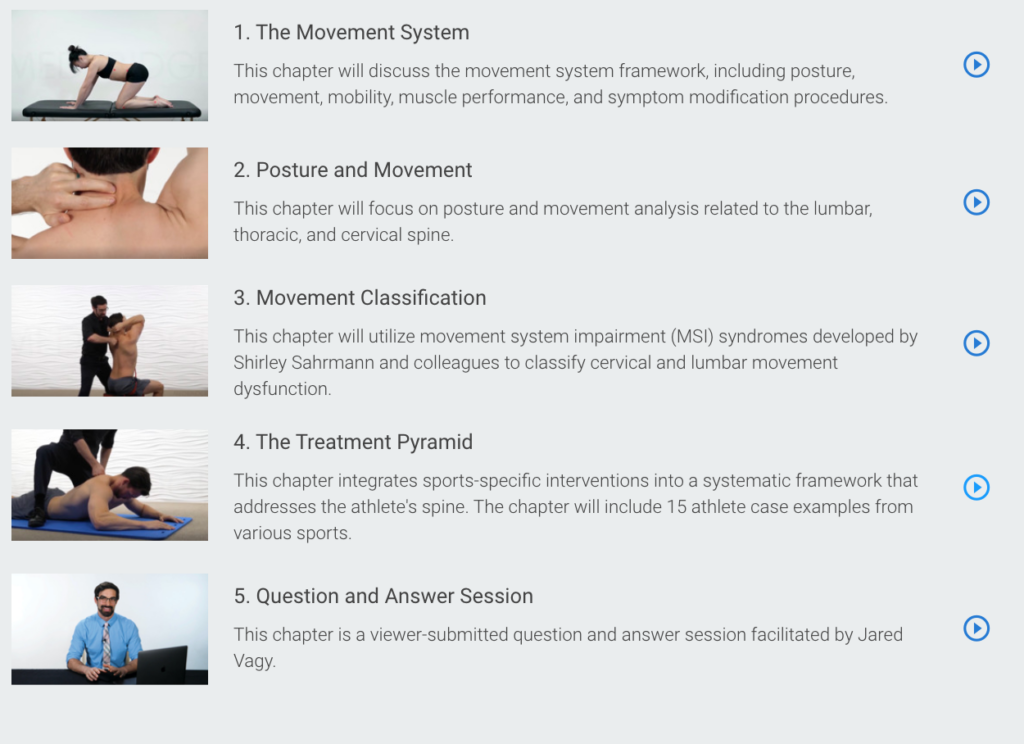
Course Objectives
Upon completion of this course, learners will be able to
• Summarize the importance of regional interdependence of the spine with its functional relationship to pathobiomechanics
• Recognize how to integrate movement, mobility, muscle performance, and symptom modification procedures into movement-based classifications
• Develop interventions based on faulty movement patterns related to key impairments obtained from objective examination testing
• Integrate sports-specific interventions into a systematic framework that addresses the athlete’s spine
• Recall current research supporting movement and sport-specific assessments and treatments
2. Foundations of Blood Flow Restriction Training
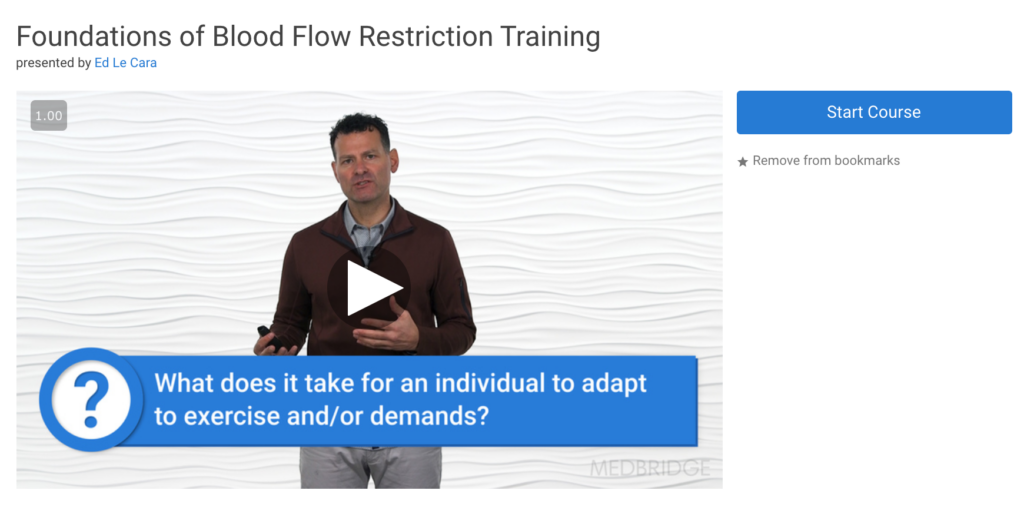
This course is presented by Ed Le Cara and is one of the newest courses on blood flow restriction (BFR) training on the platform. With the volume of research supporting BFR exploding in the past few years, it’s worth taking an hour to go through this course to get a better understanding of how blood flow restriction training may be used in your practice. Even if you don’t plan on using it extensively, it’s helpful to understand the principles in case patients or other clinicians ask questions about this type of treatment approach.
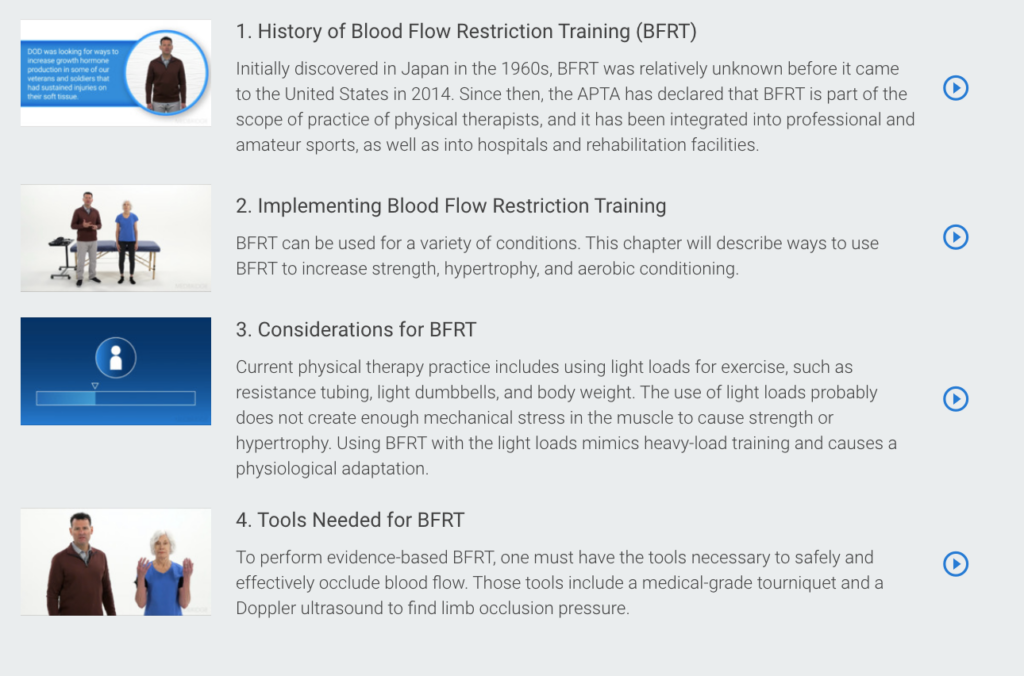
Here are the key learning objectives of the course and what to expect:
Upon completion of this course, learners will be able to
• Define what blood flow restriction training is in order to discuss treatment outcomes with peers and patients
• Describe the origins of BFRT in order to accurately discuss treatment for patient care
• Demonstrate proper location of BFR cuffs in order safely and effectively occlude blood flow
• Recall pros and cons of using limb occlusion pressures in order to accurately describe evidence-based BFR
3. Evidence-Based Treatment of the Shoulder: An Update
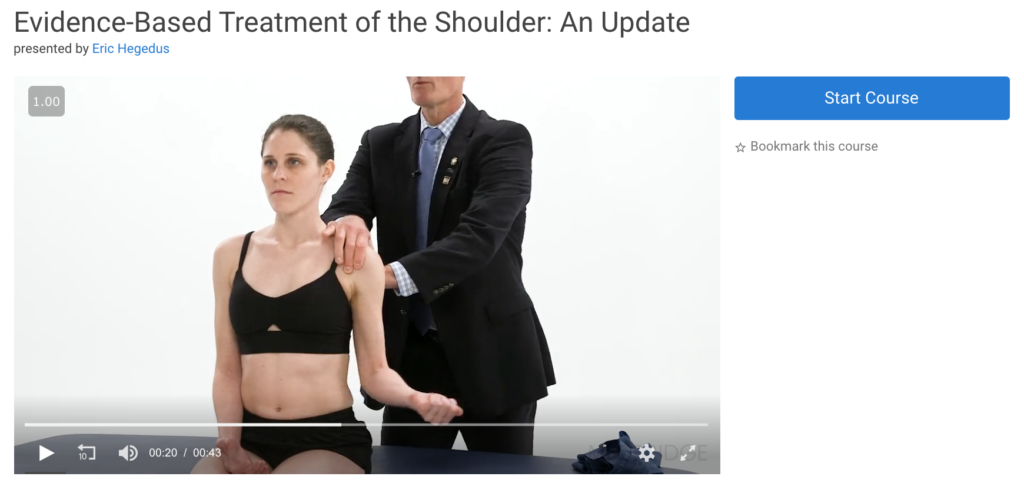
This 90 minute MedBridge course is presented by physical therapist Eric Hegedus and focuses on applying the latest evidence based treatments for the shoulder. One of the differentiating elements of why I chose this course is because of the use of the Pain and Disability Drivers model. While I think most PTs / OTs would not have any trouble understanding this approach, it may not be something you’re familiar with or learned specifically in school. I know this was the case for me so I’m always interested in hearing about different perspectives, especially when it comes to how we approach pain and treatment models.
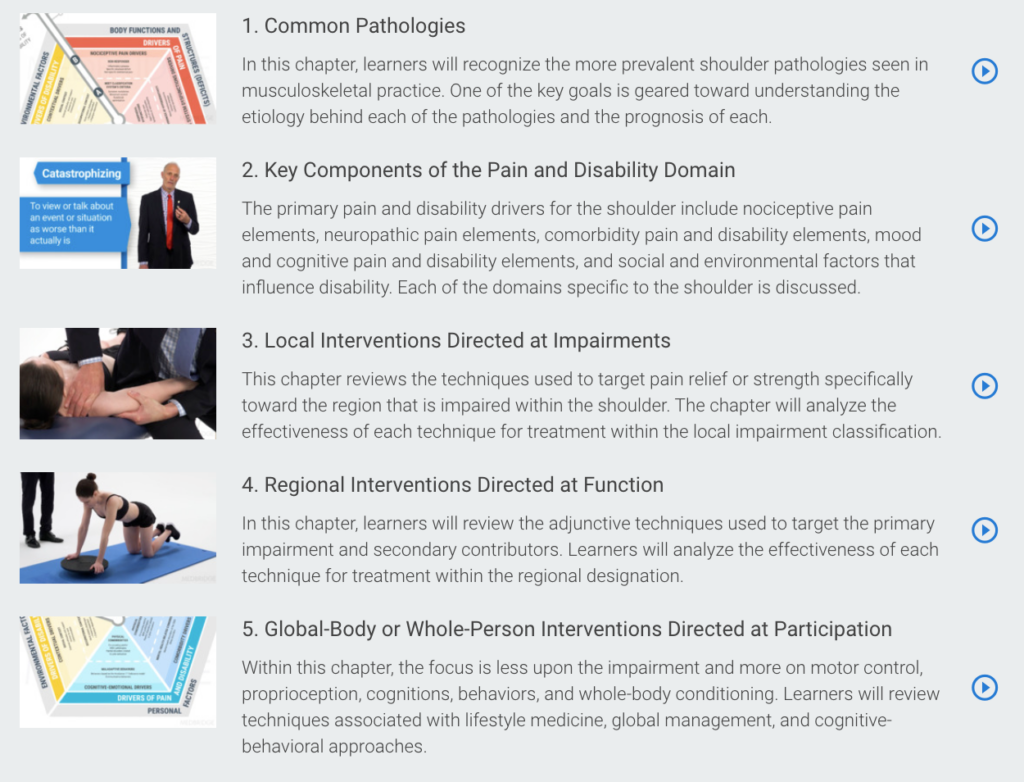
Course Objectives
• Recognize the proposed benefit to classifying shoulder conditions by similarity
• Determine the key areas of the Pain and Disability Drivers model that are unique to the shoulder
• Recognize the more prevalent shoulder pathologies seen in musculoskeletal practice
• Determine the etiology behind each of the pathologies
• Analyze the effectiveness of each technique for treatment within the designations
• Review the adjunctive techniques used to target the primary impairment and secondary contributors
4. Evidence-Based Treatment of the Lumbar Spine: An Update
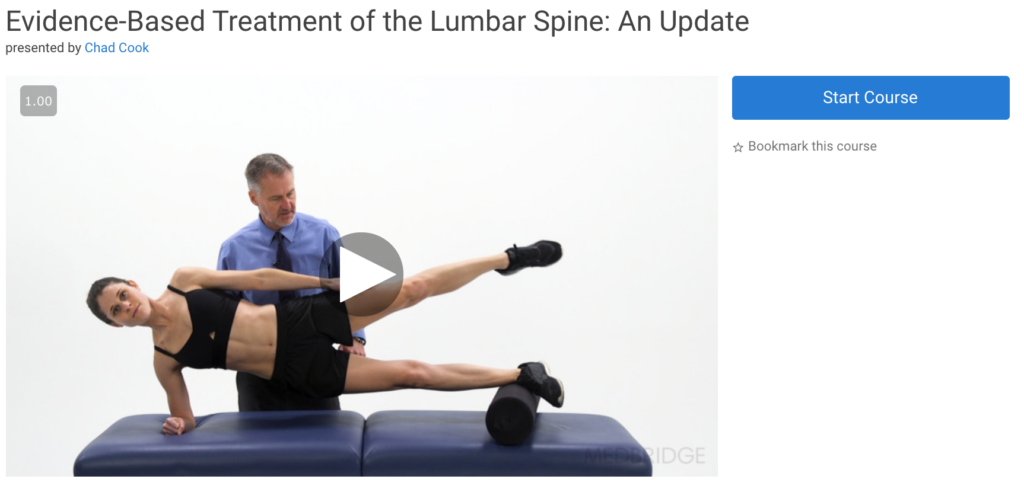
Who doesn’t love a good course on back pain? If you’ve never taken a course by physical therapist Chad Cook, this is a great one to take. He has a lot of excellent courses on LBP and other topics on MedBridge and this updated course is a great one to consider on your short list of courses to take. What I like about this course by Dr. Cook is how he breaks down the concepts quickly and supports his presentation with interesting data and research along the way. Here are the main points of the course as well as the course objectives:
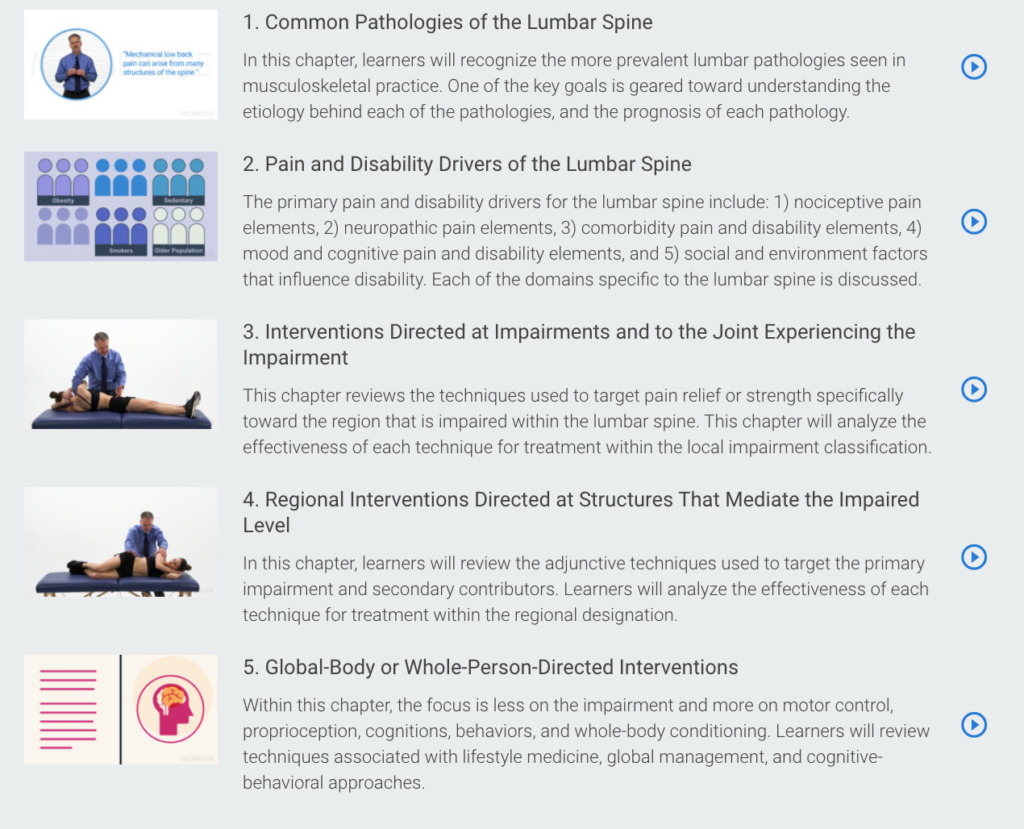
Course Objectives
Upon completion of this course, learners will be able to:
• Recognize the proposed benefits to classifying lumbar conditions by similarity
• Understand the key areas of the Pain and Disability Drivers model that are unique to the lumbar spine
• Recognize the more prevalent lumbar pathologies seen in musculoskeletal practice
• Understand the etiology behind each of the pathologies
• Analyze the effectiveness of each technique for treatment within the designations
• Review the adjunctive techniques used to target the primary impairment and secondary contributors
5. Evidence-Based Treatment of the Foot and Ankle: An Update
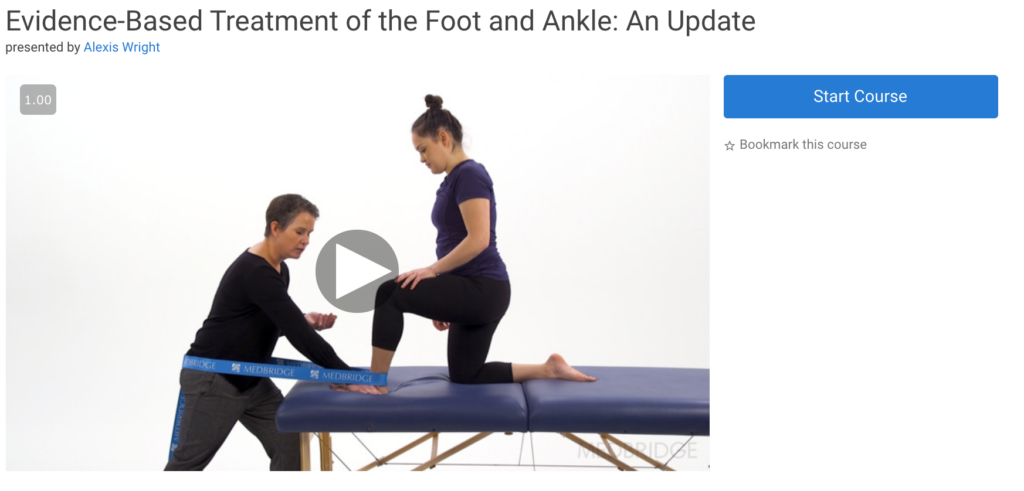
We can’t forget about the foot and ankle folks! I really like the approach physical therapist Alexis Wright takes to present issues related to the foot ankle. She mixes in evidence-based treatments to common foot and ankle issues and gives some good tips within this one hour course on the latest research when it comes to injuries like high ankle sprains, instability, plantar fasciitis, and ankle tendinopathies.
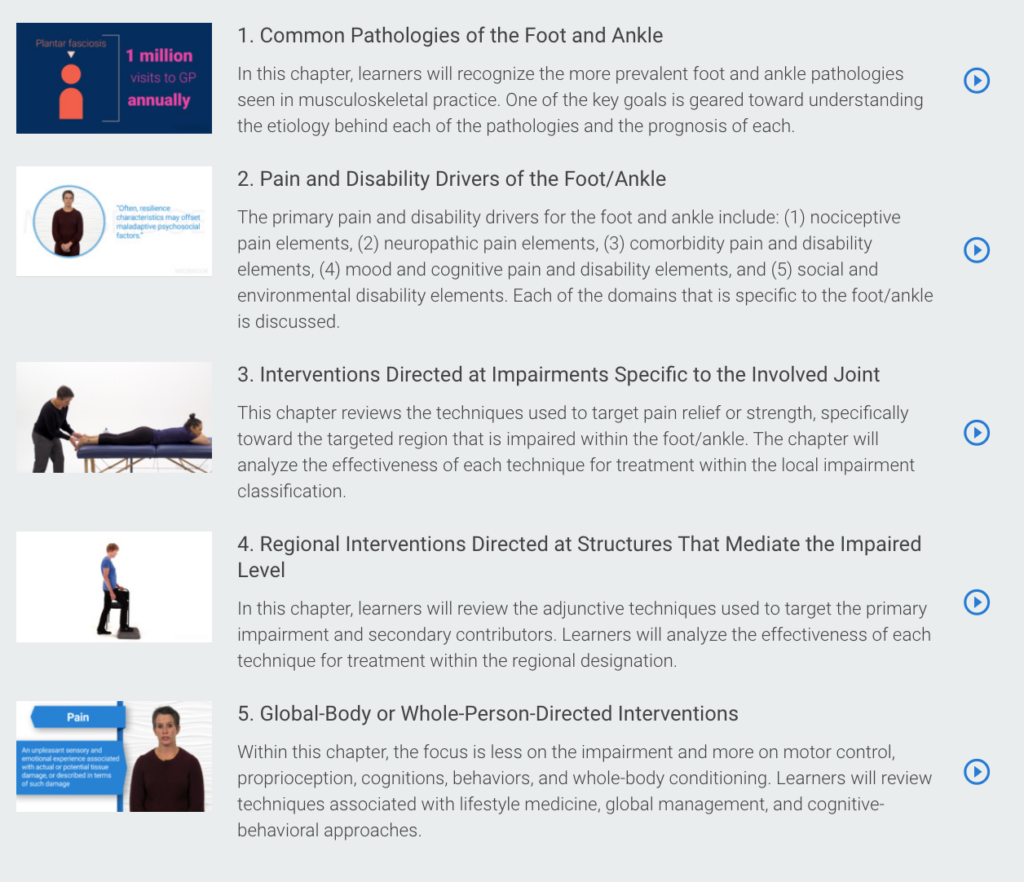
Course Objectives
Upon completion of this course, learners will be able to:
• Recognize the proposed benefit to classifying foot/ankle conditions by similarity
• Understand the key areas of the Pain and Disability Drivers model that are unique to the foot/ankle
• Recognize the more prevalent foot/ankle pathologies seen in musculoskeletal practice
• Understand the etiology behind each of the pathologies
• Analyze the effectiveness of each technique for treatment within the designations
• Review the adjunctive techniques used to target the primary impairment and secondary contributors
MedBridge Education: $150 Coupon and Promo Code!

If you haven’t already signed up for MedBridge, be sure to save $150 on the platform when you use the promo code PTProgress. This discount applies for any specialty: PT, OT, SLP, RN, ATC, and others.
Final Tips for Picking the Best MedBridge Course
There are over 1800 courses on MedBridge, so it can feel a little overwhelming at times sorting through the lists of courses. But the good news is that you can start and stop a course whenever you want and not feel bad about starting another course if you find it to be interesting.
Having said that, here are a few tips I recommend when choosing a MedBridge course:
1. Expand your skillset
It’s easy to focus on one area of rehab like outpatient orthopedics. But don’t forget to keep your neuro skills sharp! Most of the patients I see in the clinic are for orthopedic conditions but every once in a while someone comes in for therapy because they’re recovering from a stroke. Keeping my neuro skills sharp with continuing ed allows me to approach a wide range of patients with confidence.
2. Take Notes!
I know the courses on MedBridge have great quiz features and provide you access with the powerpoint presentations, but summarizing the findings in your own words or in short bullet points can really be helpful.
3. Take a course with a colleague
If you have a friend or coworker who has a MedBridge account too, then sign up for the same class and take it together. You can practice the skills you learn from the course and even discuss different ways to apply the things you learn in your clinic setting.
Start Learning!
So there you have it! Those are the top courses I’d recommend for this next year. I hope you find something new and interesting! I’m sure you will, but if you need a little guidance, start with the courses above and don’t forget to use the MedBridge promo code PTProgress to save $150 on your MedBridge subscription or renewal.

